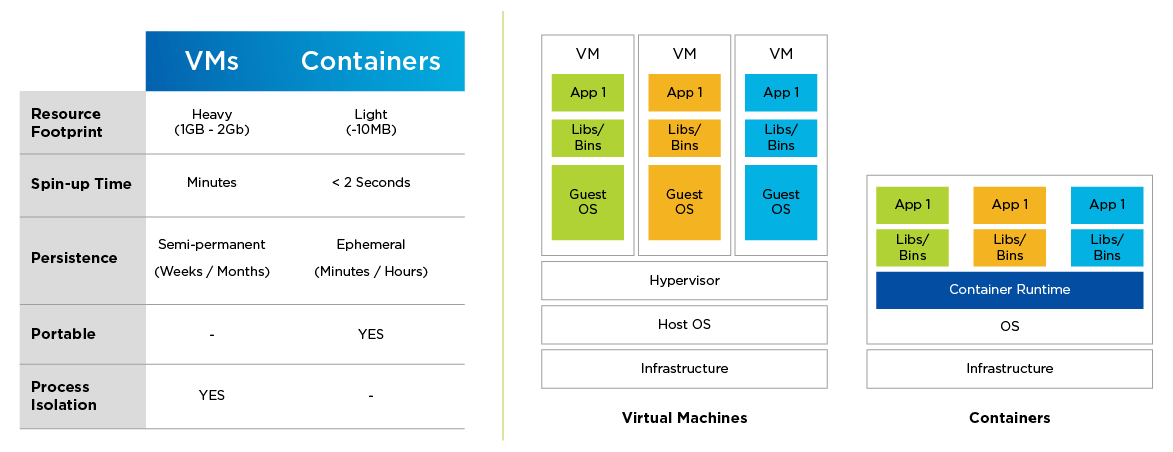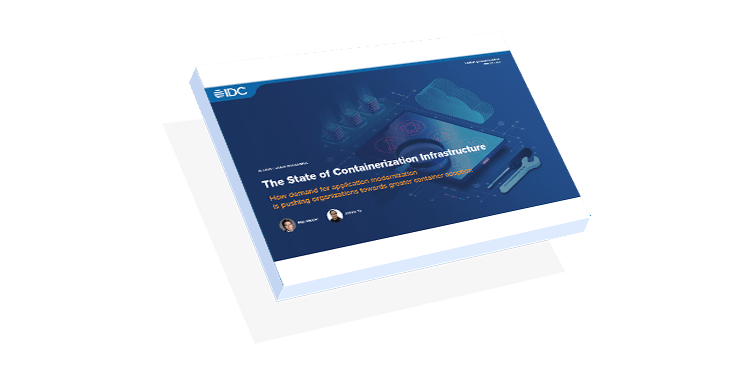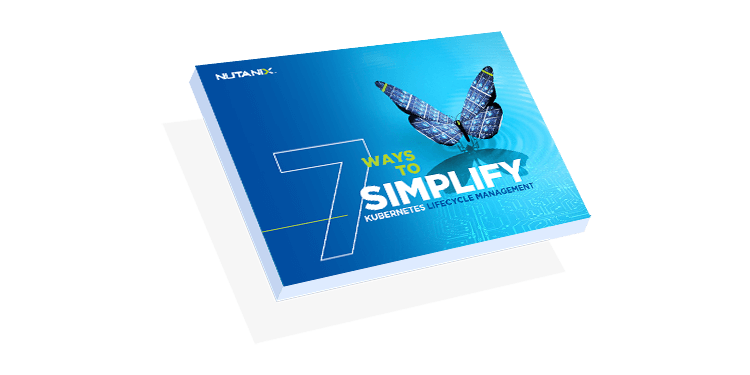What is containerization?
Containerization involves packaging software that contains all the necessary elements to run an operating system virtually. This allows organizations to run operating systems from anywhere - in a private datacenter, public cloud or even a personal laptop.
Containers make it easy to share CPU, memory, storage, and network resources in an operating system for logical packaging with other applications so that they can be easily abstracted from the environment they run in.
What are the benefits of containerization?
Fewer system resources - Containers require less overhead than traditional machines or virtual environments.
Use only what you use - Use only the containers you need and add more when needed.
Smooth operation - The operations of containers are the same, no matter when or where they are deployed.
More Efficient - Containers can be deployed, patched and scaled when needed.
Better production cycles - Can accelerate development through better testing and production cycles.
What are the benefits of cloud native applications?
- Cost efficient - This pay-per-use model and open-source system allows DevOps teams to only pay for the backup, maintenance, and resources they use.
- Better security - Cloud native applications use two-factor authentication, restricted access and sharing only relevant data and fields.
- Adaptability and scalability - Cloud native applications can scale and adapt as needed to allow for fewer updates and can grow as the business grows.
- Flexible automation - Cloud native applications allow DevOps teams to collaborate with CI/CD processes for deployment, testing, and gathering feedback. Organizations can also work on multiple cloud platforms, whether it’s public, private, or hybrid for enhanced productivity and customer satisfaction.
- Removes vendor lock-in - DevOps teams can work with multiple cloud providers on the same cloud native platform, eliminating vendor lock-in.
- Enhanced containerization technology - Application containerization works across Linux and select Windows and Mac OS which includes bare-mental systems, cloud instances, and virtual machines. These applications can run on a single host and access the same operating system through this virtualization method.
Containerization technology vs virtualization
While container adoption is rapidly outpacing the growth of virtual machines (VMs), containers likely won’t replace VMs outright. In general, containerization technology drives the speed and efficiency of application development, whereas virtualization drives the speed and efficiency of infrastructure management.
At a glance, here is a comparison of containers and VMs across several common criteria:

What is container orchestration?
Container orchestration involves a set of automated processes by which containers are deployed, networked, scaled, and managed. The main container orchestration platform used today is Kubernetes, which is an open-source platform that serves as the basis for many of today’s enterprise container orchestration platforms.
What is Kubernetes?
Kubernetes is a portable, extensible, open-source platform for managing containerized workloads and services, that facilitates both declarative configuration and automation. It has a large, rapidly growing ecosystem. Kubernetes services, support, and tools are widely available. Kubernetes provides users with:
Service discovery and load balancing
Storage orchestration
Automated rollouts and rollbacks
Automatic bin packing
Self-healing
Secret and configuration management
What is containerization in the cloud?
The Kubernetes ecosystem is broad and complex and no single technology vendor offers all of the components of a complete on-prem modern applications stack. Beginning with the innovative approach to infrastructure that Nutanix pioneered with HCI and AOS, Nutanix has several core competencies that are both rare and difficult to replicate that offer differentiated value to customers.
Nutanix’s primary technology strengths for building on-prem Kubernetes environments include:
Distributed systems management capabilities
Integrated storage solutions covering the three major classes: Files, Volumes, and Objects storage
Nutanix Kubernetes Engine - Fully-Integrated Kubernetes management solution with native Kubernetes user experience
We believe Nutanix hyperconverged Infrastructure (HCI) is the ideal infrastructure foundation for containerized workloads running on Kubernetes at scale. Nutanix provides platform mobility giving you the choice to run workloads on both your Nutanix private cloud as well as the public cloud. The Nutanix architecture was designed keeping hardware failures in mind, which offers better resilience for both Kubernetes platform components and application data. With the addition of each HCI node, you benefit from the scalability and resilience provided to the Kubernetes compute nodes. Equally important, there is an additional storage controller that deploys with each HCI node which results in better storage performance for your stateful containerized applications.
The Nutanix Cloud Platform provides a built-in turnkey Kubernetes experience with Nutanix Kubernetes Engine (NKE). NKE is an enterprise-grade offering that simplifies the provisioning and lifecycle management of multiple clusters. Nutanix is about customer choice, customers can run their preferred distribution such as Red Hat OpenShift, Rancher, Google Cloud Anthos, Microsoft Azure, and others, due to the superior full-stack resource management.
Nutanix Unified Storage provides persistent and scalable software-defined storage to the Kubernetes clusters. These include block and file storage via the Nutanix CSI driver as well as S3-compatible object storage. Furthermore, with Nutanix Database Service, you can provision and operate databases at scale.
Explore our top resources

Take a Test Drive
Test drive Nutanix Cloud Platform across hybrid multicloud environments

4 Ways Nutanix and Red Hat Address Modern IT Challenges
Organizations need the benefits of cloud-native solutions, containerization at scale, and moving IT to the network edge to stay competitive.

5 benefits of using HCI for Kubernetes
Kubernetes, containers, and cloud native technologies are the key components of digital transformation. Together, they enable companies to build and deploy applications in innovative and e cient new ways.


